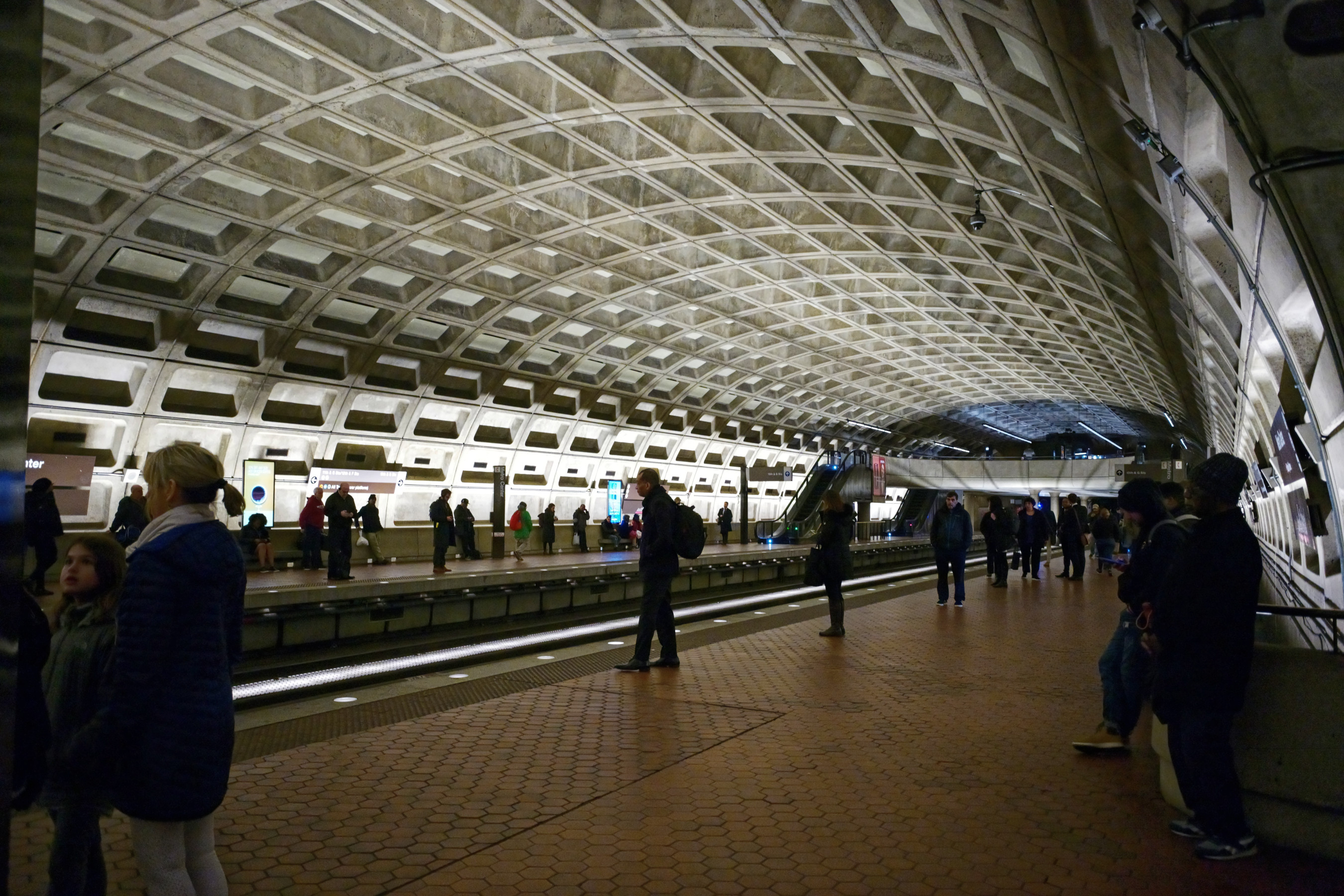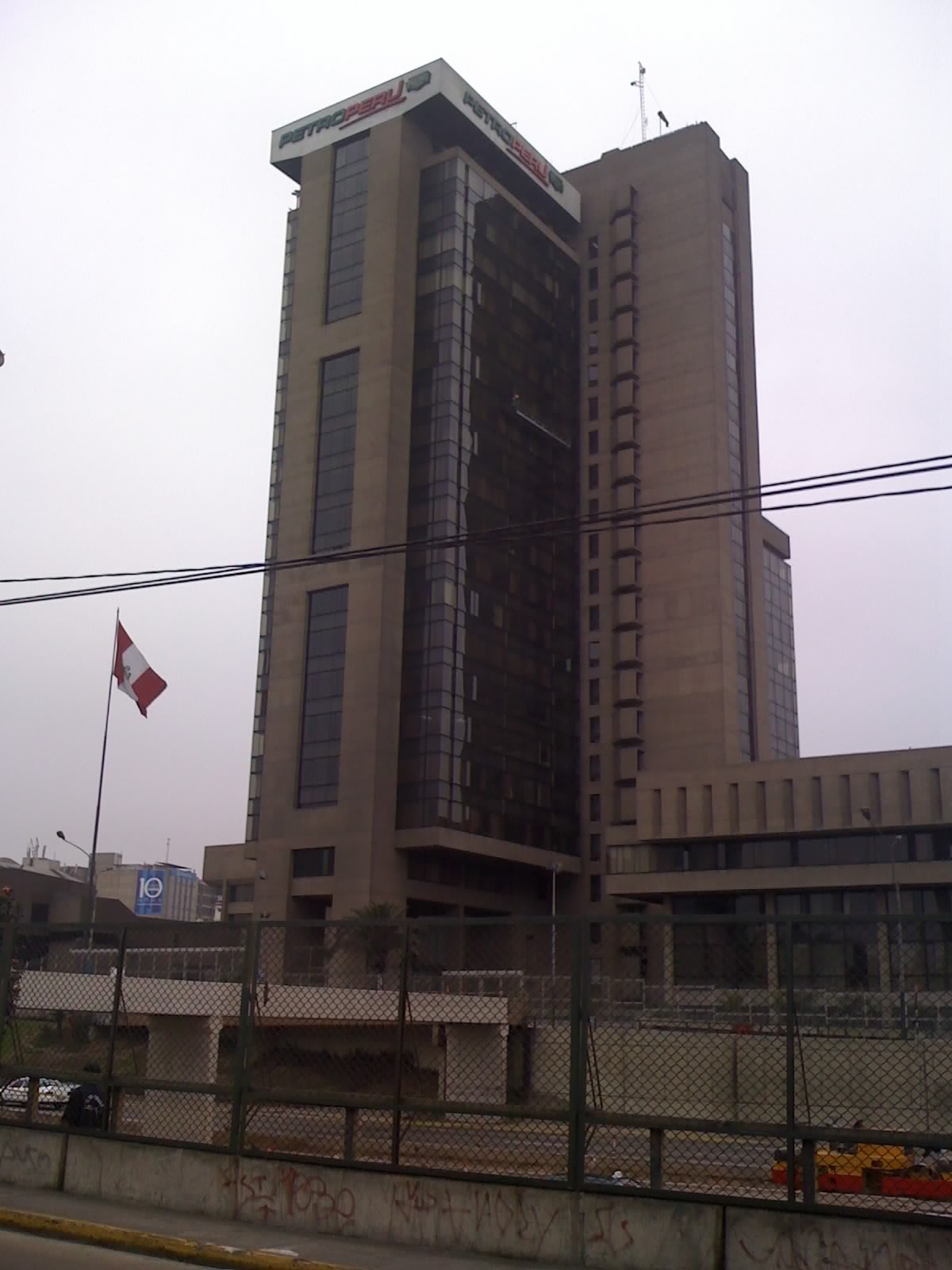|
Edificio Petroperú
The Petroperú Building is a building located in San Isidro District, Lima. It functions as the main office of Petroperú, a state company dedicated to refining, transporting, distributing and marketing oil in Peru. History The building, designed by the architects Daniel Arana Ríos and Walter Weberhofer, was the winning design in a contest organised by the military government of Juan Velasco Alvarado in the early 1970s. The building, strategically located in central San Isidro, was projected to host the offices of state company Petroperú, being inaugurated in 1973. Overview It stands at the intersection of Luis Bedoya Reyes and Canaval y Moreyra avenues. It has twenty-two floors and three basements in addition to having a helipad on top and is part of the architectural style known as brutalism. In addition to Petroperú, the building houses several public offices as well as the Ministry of Housing, Construction and Sanitation, the Agency for the Promotion of Private Investme ... [...More Info...] [...Related Items...] OR: [Wikipedia] [Google] [Baidu] |
Brutalism
Brutalist architecture is an architectural style that emerged during the 1950s in the United Kingdom, among the reconstruction projects of the post-war era. Brutalist buildings are characterised by minimalist constructions that showcase the bare building materials and structural elements over decorative design. The style commonly makes use of exposed, unpainted concrete or brick, angular geometric shapes and a predominantly monochrome colour palette; other materials, such as steel, timber, and glass, are also featured. Descended from Modernism, brutalism is said to be a reaction against the nostalgia of architecture in the 1940s. Derived from the Swedish phrase ''nybrutalism'', the term "new brutalism" was first used by British architects Alison and Peter Smithson for their pioneering approach to design. The style was further popularised in a 1955 essay by architectural critic Reyner Banham, who also associated the movement with the French phrases '' béton brut'' ("raw c ... [...More Info...] [...Related Items...] OR: [Wikipedia] [Google] [Baidu] |
Buildings And Structures In Lima
A building or edifice is an enclosed structure with a roof, walls and windows, usually standing permanently in one place, such as a house or factory. Buildings come in a variety of sizes, shapes, and functions, and have been adapted throughout history for numerous factors, from building materials available, to weather conditions, land prices, ground conditions, specific uses, prestige, and aesthetic reasons. To better understand the concept, see ''Nonbuilding structure'' for contrast. Buildings serve several societal needs – occupancy, primarily as shelter from weather, security, living space, privacy, to store belongings, and to comfortably live and work. A building as a shelter represents a physical separation of the human habitat (a place of comfort and safety) from the ''outside'' (a place that may be harsh and harmful at times). buildings have been objects or canvasses of much artistic expression. In recent years, interest in sustainable planning and building practi ... [...More Info...] [...Related Items...] OR: [Wikipedia] [Google] [Baidu] |
Javier Alzamora Valdez Building
The Javier Alzamora Valdez Building () is located in the historic center of Lima, Peru. It stands at the intersection of Abancay and Colmena avenues, next to the University Park. Formerly the headquarters of the Ministry of Education, it's the main location of the Superior Court of Justice of Lima, part of the Judiciary of Peru. History Construction began on the building on October 27, 1952 and was inaugurated on July 17, 1954 as part of the public works carried out during the '' Ochenio'' of General Manuel A. Odría. President Odría and his Ministry of Education, , were present both at the laying of the first stone and at the inauguration of the now completely constructed building. There was a project to build a twin tower in front of the building, on Abancay avenue, which would complete a circular space, but only the foundations and basement were built. It is what later became known as the "El Hueco" Shopping Center. Originally it served as the headquarters of the Ministry ... [...More Info...] [...Related Items...] OR: [Wikipedia] [Google] [Baidu] |
List Of Tallest Buildings In Peru
This list of tallest buildings in Peru ranks Peruvian skyscrapers that stand at least 95 metres (311 ft), based on standard height measurement. This includes architectural details but does not include antenna masts. Tallest buildings See also *List of tallest buildings in South America Notes References {{TBSW Lists of buildings and structures in Peru, Tallest Lists of tallest buildings in South America, Peru Skyscrapers in Peru, * Lists of tallest structures by country, Peru Peru-related lists of superlatives, Buildings ... [...More Info...] [...Related Items...] OR: [Wikipedia] [Google] [Baidu] |
Gestión
El Comercio Group (GEC) is a Peruvian media conglomerate that owns multiple Newspapers in Peru, newspapers, Television in Peru, television stations and other entities. The largest media conglomerate in Peru and one of the largest in South America, El Comercio Group is owned by the Miró Quesada family. History The newspaper ''El Comercio (Peru), El Comercio'' was founded by Manuel Amunátegui and Alejandro Villota on 4 May 1839. Originally founded as Infobanco-Teleinformative Services in 1991, would later change to Empresa Editora El Comercio S.A on 1 July 1996. Canal N was launched as a news channel on 4 July 1999 as a subscription television channel. Plural TV Group was launched on 5 March 2003 in a partnership between El Comercio Group and La República Group, with El Comercio owning seventy percent of Plural TV while La República owned the remaining thirty percent. Canal N, América Televisión, Radio América and Disney Radio Peru were then managed by Plural TV Group. E ... [...More Info...] [...Related Items...] OR: [Wikipedia] [Google] [Baidu] |
Art Gallery
An art gallery is a room or a building in which visual art is displayed. In Western cultures from the mid-15th century, a gallery was any long, narrow covered passage along a wall, first used in the sense of a place for art in the 1590s. The long gallery in Elizabethan and Jacobean architecture, Jacobean houses served many purposes including the display of art. Historically, art is displayed as evidence of status and wealth, and for religious art as objects of ritual or the depiction of narratives. The first galleries were in the palaces of the aristocracy, or in churches. As art collections grew, buildings became dedicated to art, becoming the first art museums. Among the modern reasons art may be displayed are aesthetic enjoyment, Visual arts education, education, historic preservation, or for marketing purposes. The term is used to refer to establishments with distinct social and economic functions, both public and private. Institutions that Preservation (library and archive), ... [...More Info...] [...Related Items...] OR: [Wikipedia] [Google] [Baidu] |
Ministry Of Housing, Construction And Sanitation (Peru)
The Ministry of Housing, Construction and Sanitation (, MVCS) of Peru is the government ministry responsible for housing materials and construction, as well as the administration of the country's water supply. , the minister responsible is . History In 1969, under the Revolutionary Government of the Armed Forces of Peru, the Ministry of Development and Public Works was dissolved. Its Development and Public Works Sector was replaced by the Ministry of Transport and Communications, and its National Housing Board was replaced by the Ministry of Housing and Construction (, MVC). On May 11, 1992, under the government of Alberto Fujimori, the ministry was merged with that of Transport and Communications, creating the Ministry of Transport, Communications, Housing and Construction (, MTCVC). Under Alejandro Toledo, the creation of a Housing and Construction Ministry was announced in September 2001, eventually being created under its current name on July 11, 2002, one day after the rees ... [...More Info...] [...Related Items...] OR: [Wikipedia] [Google] [Baidu] |
Petroperú
Petróleos del Perú (), better known as Petroperú, is a Peruvian state-owned enterprise and private law dedicated to the transportation, refining, distribution, and commercialization of fuels and other petroleum products. It has been owned by the State of Peru since 1969, is considered among the taxpayers to the treasury, and currently employs more than 2,500 people. Petroperú invests in education, health, and other sustainable development projects throughout the Peruvian territory. Among the current strategic objectives of the company are the supply of fuel to the entire Peruvian market, as well as financial sustainability and its operations, with an emphasis on safety and care for the environment. History Background On October 9, 1968, the dictatorship of General Juan Velasco Alvarado ordered the seizure and summary expropriation of the facilities of The International Petroleum Company (IPC), a subsidiary of Standard Oil of New Jersey, at the Talara refinery (Piura De ... [...More Info...] [...Related Items...] OR: [Wikipedia] [Google] [Baidu] |
El Comercio (Peru)
is a Peruvian newspaper based in Lima. Founded in 1839, it is the oldest newspaper in Peru and one of the oldest Spanish language, Spanish-language papers in the world. It has a daily circulation of more than 120,000. It is considered a newspaper of record and one of the most influential media in Peru. History 19th century ''El Comercio'' began as a commercial, political and literary newspaper. Its first publication was on Saturday, May 4, 1839 by José Manuel Amunátegui y Muñoz (Chile, — Lima ) and Alejandro Villota (Buenos Aires, — Paris, ). It was originally a one-sheet afternoon newspaper printed on both sides in tabloid format. The price of the first edition was one Spanish real, silver real. Its motto was "Order, freedom, knowledge." In total there were ten people who prepared the first issue. Printing was made on a handlebar "Scott" flatbed press, powered by a mule-driven winch. Its first headquarters was the Casa de la Pila, located at Calle del Arzobispo No. 147 ... [...More Info...] [...Related Items...] OR: [Wikipedia] [Google] [Baidu] |






